This is the final of four live blog posts by me over the last 24 hours covering this excellent event.
Afternoon Commercial session – Studyportals
These folks have been mind enough to work with Jisc at a data level twice. Most recently we agreed a data sharing agreement to use their data in a rapid prototyping exercise for our Analytics Labs service with a corss institutional team being coached in data product development using Internationalisation as a theme.
Studyportals is a platform where students can compare courses from 3500 universities with 37 million unique visitors each year. Students are tracked, income has moved from cost per click to cost per enrollment. Gives a measure of interest and conversion for course providers. plus evidence to assist with the below strategic decisions
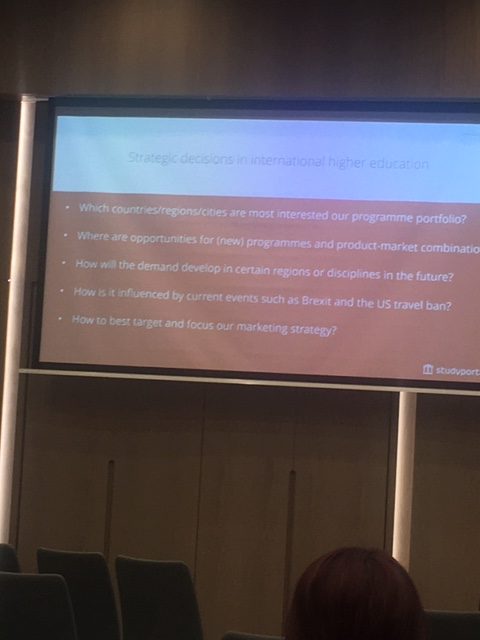
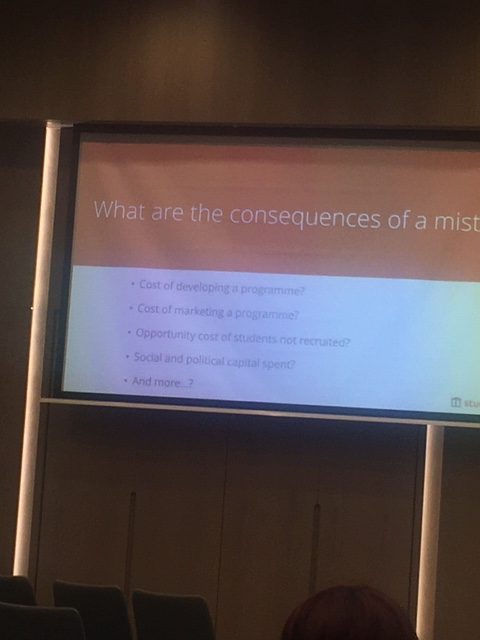
Most universities are very bad at launching the right programmes and closing unprofitable programmes based on evidence.
What are we offering? What should we be offering?
Students in Shanghai 52% interest in engineering vs 26% in Mumbai…. That sort of thing…..
Where are the students coming from now? Where might they come from in the future?
The system generates its own data dictionary based on supply and demand eg emergence of data science as a disciplins as well as showing indication of demand vs supply to allow smart marketing as well as course offer management. Rather cool and I can see why this tools is so valued.
Here’s a drill down into UAE Masters
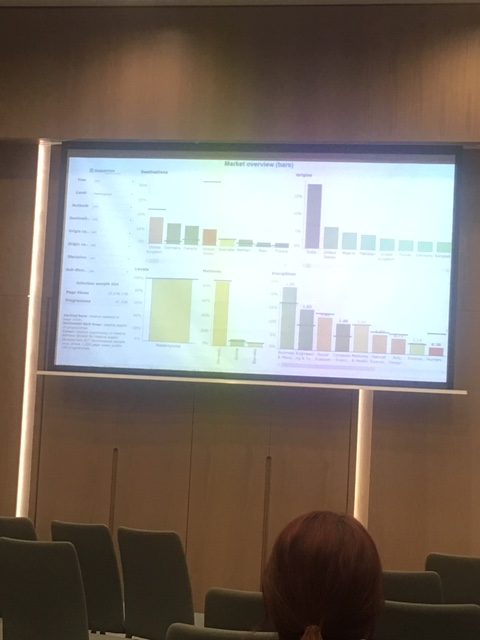
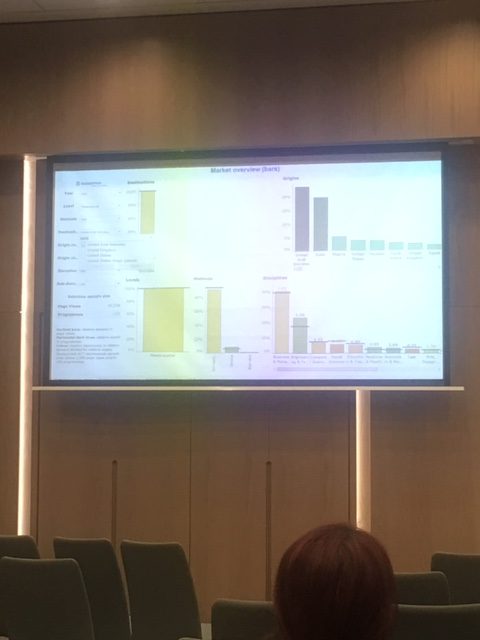
Gives a feeling for global market by discipline.
Final Plenary – Data HE and Mark Corver, WonkHE, Anita Jackson (ex Jisc Analytics Labs participant). The future shape of Higher Education and its implications for planning
The conference has had some great coverage of future gazing and this is our final bite. I met Mark briefly when he worked at UCAS and gather his consultancy is going strong, using HESA and institutional data to predict student demand among other great things. Must be if he bagged this Keynote session at such an influential event!
Mark kicked off with a birth rate analysis mapped to university recruitment and leading to the conclusion others at the conference have drawn – we are approaching a boom in 18 year olds. But adds a dimension of likely to aply for HE. So extrapolation models base don UCAS data.
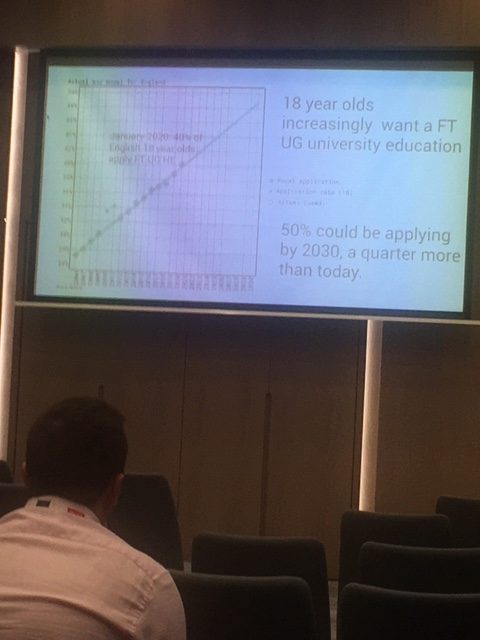
The 50% figure is said to be reliable.
Increased population and increased demand to go to university suggest 60% increase in HE demand by 2030….
https://myles.jiscinvolve.org/wp/files/2020/02/corver2-rotated.jpg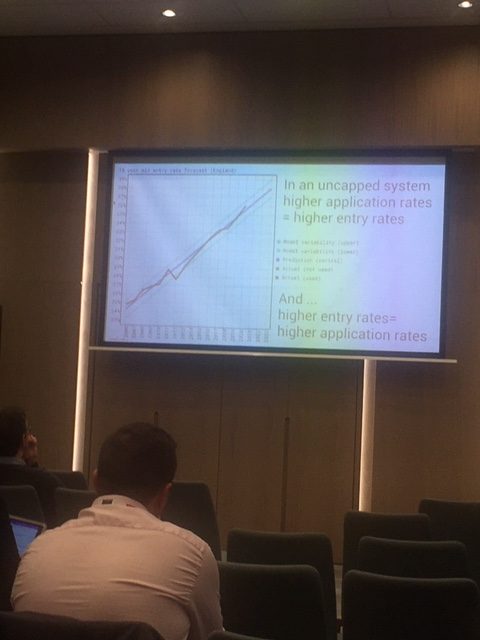
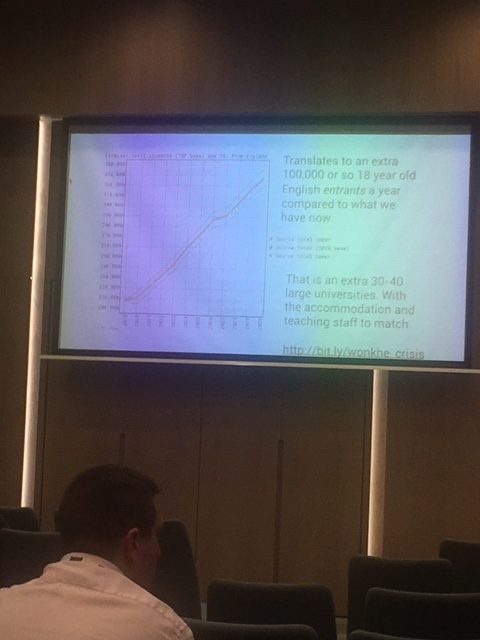
This one shows divergence in market coinciding with lifting of student number cap
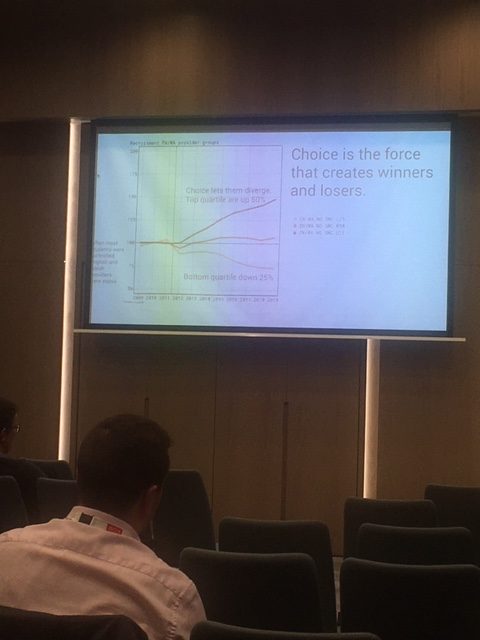
The trends Mark provides suggest a massive opportunity for Higher Education in the decade going forward but funding models will be challenging!
Another interesting vis frm Mark was a grouping of individual universities with similar sized corporate organisations. These are peers in a business functional sense so could be a good source for organisational practice.
The suggestion here is that by running an analytical model of your university you create a neutral trajectory, something that every proposal for change should be run against to determine likely impact. This leads to execution of strategy through data… objectives are converted to targeted effort by analysis. Data brand is managed and you have a preventative effect on bad policy. Stops bad things happening even if the intentions are good.
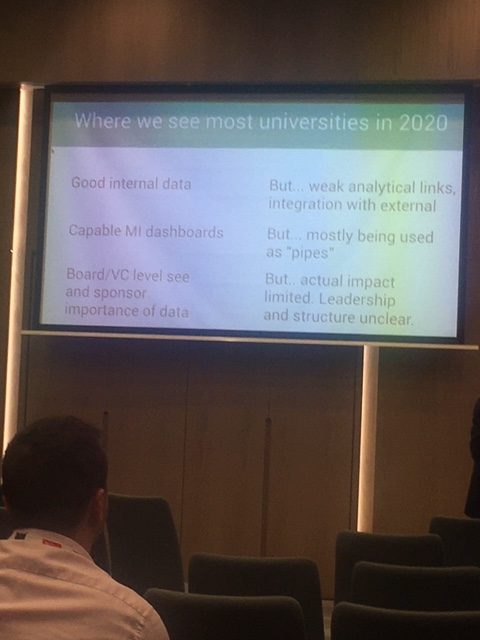
Three suggestions for success:
1. Capability gap – universities do this well but miss the middle part – data science (it’s not new or expensive but it is code based)
2. Platform problem – you need something to write code in and hold analytics data (don’t spend much, limit software systems to one, look at industry not just academics)
3. The data barrier – ddata is the key raw material, you’ll need lots, some data is better then ever eg geographical, the hE data system for old worls (HESA, UCAS) have created data themes which work well in the old world but present a barrier of cost, access and efficiency.
Mark suggests a University led redesign to address this ‘data barrier’

A round of applause for Mark Cover and Data HE and the conference ends in an expert panel discussing the implications. Thanks HESPA. OIt’s always a pleasure and I hope to work with you all in the coming months…..